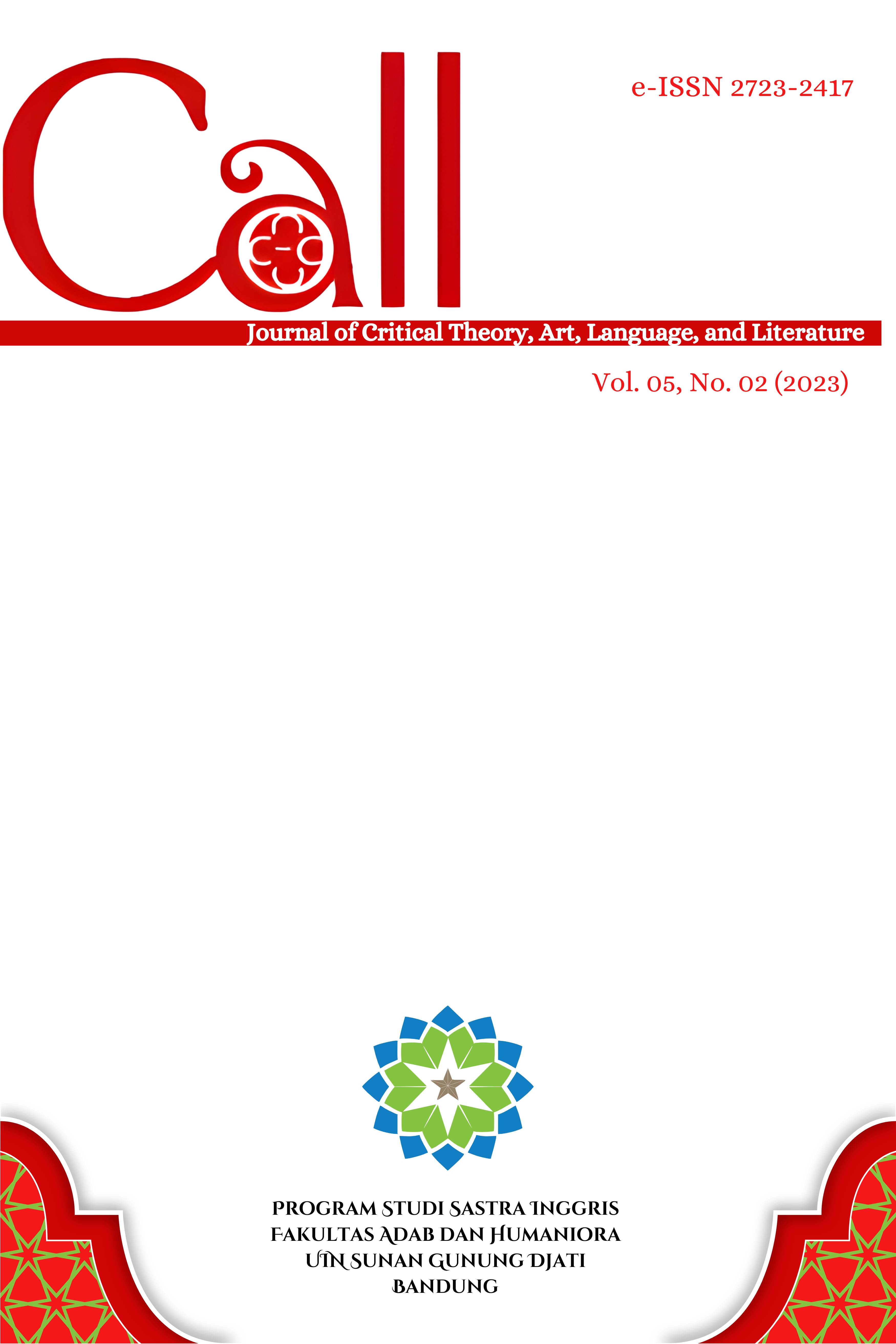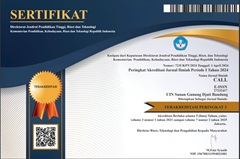RACISM AS MANIFESTATION OF WHITE SUPREMACY IN BLACKKKLANSMAN AND 13TH FILMS
DOI:
https://doi.org/10.15575/call.v5i2.17061Abstract
This research aimed to present how white supremacy was represented in 13th by Ava DuVernay and BlacKkKlansman by Spike Lee and to identify and analyse how the characters in 13th by Ava DuVernay and BlacKkKlansman by Spike Lee deal with the racist system. According to Abrams literary criticism is a method to describe events in the film. Seek to understand and interpret the meaning of an event of human behaviour interaction in a particular situation according to the researcher's perspective. Research that literary criticism aimed to understand the literary object under study in depth. The method used was to explore sources of information and data in the form of popular literature, which is films. Using a postcolonial approach, both films had a theme of racism, and also white supremacy in the USA. The issue of racism and white supremacy has resurfaced after more and more cases of racism by white people against black people. The characters in both films find racism from white people, they will try to fight against racism with various kinds of struggles.
Â
Keywords: postcolonialism, racism, white supremacy
References
Abrams, M. H. (1971). The mirror and the lamp. London: Oxford University Press.
Adi, I. R. (2011). Fiksi populer: teori & metode kajian. Yogyakarta: Pustaka Pelajar.
Boehmer, E. (1995). Colonial and postcolonial literature. New York: Oxford University Press.
Cambridge Dictionary. (n.d.). RACISM | meaning in the Cambridge English Dictionary. Retrieved 12 19, 2020, from Cambridge Dictionary: https://dictionary.cambridge.org/dictionary/english/racism
David L. Hamilton, J. T. (2005). Stereotypes in our culture. Washington: Blackwell Publishing.
DuVernay, A. (Director). (2016). 13th [Motion Picture].
Effendy, O. U. (1986). Dimensi dimensi komunikasi. Bandung: Alumni.
Geuens, J.-P. (2000). Film production theory. New York: SUNY Press.
Halstead, J. M. (2008). Racism, cultural. In R. T. Schaefer, Encyclopedia of Race, Ethnicity, and Society (p. 1117). Chicago: Sage.
Hartley, J. (2010). Communication, cultural and media studies: the key concepts. Yogyakarta: Jalasutra.
Ho, E. (2004). Empire through diasporic eyes: a view from the other boat.
Hornby, a. (2006). Oxford advanced learner's dictionary. Oxford: Oxford University Press.
Joseph M. Boggs, D. W. (2008). The art of watching films. (7th Edition). Boston: McGraw-Hill.
Lee, S. (Director). (2018). BlacKkKlansman [Motion Picture].
Loomba, A. (1998). Colonialism/Postcolonialism. London: Routledge.
Malik, Kamal. (2017). Rekam jejak Malcolm X dalam penegakan hak sipil Orang Kulit Hitam Amerika Serikat 1957-1965. Bandung: Universitas Pendidikan Indonesia.
McMichael, P. (2000). Development and social change: a global perspective. California: Pine Forge Press.
Monaco, J. (2000). How to read a film: the world of movies, media, and multimedia: language, history, theory. New York: Oxford University Press.
Morton, K. (2017). Imagery in literature and its relation to white supremacy. CLA Journal, 51-58.
Nelson, T. D. (2009). Handbook of prejudice, stereotyping, and discrimination. California: Psychology Press.
Perkinson, J. W. (2004). White theology outing supremacy in modernity. New York: Palgrave Macmillan.
Said, E. (1993). Culture and imperialism. New York: Vintage Books.
Villarejo, A. (2007). Film Studies: The Basics. New York: Routledge.
Downloads
Published
Issue
Section
Citation Check
License
Authors who publish in CALL agree to the following terms:
- Authors retain copyright and grant the journal right of first publication with the work simultaneously licensed under Attribution-ShareAlike 4.0 International (CC BY-SA 4.0) License that allows others to share the work with an acknowledgment of the work's authorship and initial publication in this journal.
- Authors are able to enter into separate, additional contractual arrangements for the non-exclusive distribution of the journal's published version of the work (e.g., post it to an institutional repository or publish it in a book), with an acknowledgment of its initial publication in this journal.
- Authors are permitted and encouraged to post their work online (e.g., in institutional repositories or on their website) prior to and during the submission process, as it can lead to productive exchanges, as well as earlier and greater citation of published work (See The Effect of Open Access).




